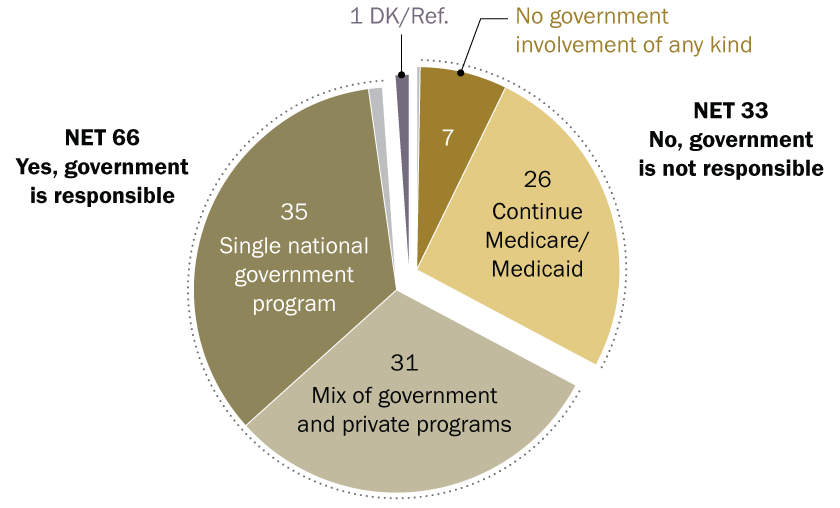Male-Killing Virus Is Discovered in Insects
Scientists in Japan recently discovered a virus that selectively kills males. The virus, named SIMKV, is a microbial symbiont which knocks off males because they can't help propagate the microbe. Over time generations become almost solely female, and thus infected populations are very limited in their ability to continue to reproduce and survive over time. This could have large implications in disease control in the future, because the virus could potentially be used or adapted to infect disease carrying insects like mosquitos and wipe them out. Furthermore, the virus could be utilized as a tool for killing agricultural pests as well, providing a more natural way support agricultural productivity.

Male-Killing Virus Is Discovered in Insects
The chance finding in a Japanese university’s greenhouse could help researchers find ways to control agricultural pests or even insects that spread disease.
Scientists in Japan have identified a virus that selectively kills males — and it happens to be inheritable, creating generation upon generation of all females.
The discovery, made in caterpillars and described Monday in The Proceedings of the National Academies of Sciences, is “robust” evidence that “more than one virus has evolved to selectively kill male insects,” said Greg Hurst, a symbiont specialist at the University of Liverpool in England who wasn’t involved in the study. That could one day help control populations of pest insects and disease vectors like mosquitoes.
“I expect there are a lot more cases like this that will be discovered in the near future,” said Daisuke Kageyama, a researcher at the National Agriculture and Food Research Organization in Japan and one of the study’s authors.
The virus was found by chance. Misato Terao, a research technician at Minami Kyushu University, was straightening up the campus greenhouse when she found unwelcome intruders — fat green caterpillars — nibbling on the impatiens. She scooped them up and, on a whim, dropped them off in the lab of Yoshinori Shintani, an insect physiologist who is Minami Kyushu’s resident bug guy.
On a hunch, he bred the females from the greenhouse with male tobacco moths he found fluttering around the lights in his own home. The greenhouse moths only had daughters — and so did their daughters, and their daughters’ daughters. Over 13 generations of the moths’ descendants, only three had males.
Dr. Shintani and his colleague Dr. Kageyama quickly realized they had a “male-killer” on their hands.
For decades, scientists have known that microbial hitchhikers, usually bacteria, can take up residence in the jellylike cytoplasm of insects’ cells. And through a process that’s not very well understood, those microbes can be passed from mother to offspring.
Sometimes these microbial symbionts tamper with the host’s reproduction. From the symbiont’s perspective, “males are useless” because they can’t help propagate the microbe, Dr. Kageyama said. So the symbiont simply eliminates them. The bacteria Wolbachia can prevent male butterflies from being born. Other bacteria kill developing males before they hatch, reducing competition for the females and giving them a fortifying snack: the eggs that held their brothers.
Dr. Shintani’s team found that antibiotics didn’t knock out the male-killing effect in the greenhouse moth’s progeny, so bacteria couldn’t be responsible. Genetic analysis turned up telltale signs of a virus, but unlike any male-killer ever seen before. Only two male-killing viruses have ever been documented; the virus found by the Japanese researchers, which they named SlMKV, seems to have evolved separately.
To confirm the male-killer was actually infectious and inheritable, Dr. Shintani needed to juice some tobacco moths. He and his team blended the bodies of pupae and adult moths with SlMKV and injected the resulting slurry into the bodies of uninfected pupae and moths. That did the trick — the next generation heavily favored females, and in subsequent generations males vanished altogether.
Further experiments revealed just how lucky the researchers were to find this male-killer. While cool weather can be lethal to tobacco cutworms, SlMKV is vulnerable to heat, and the researchers found that the virus’s effect was diminished and eventually neutralized at higher temperatures. The tobacco cutworm’s native range is in subtropical parts of China and Taiwan.
The scientists suspect the balmy climate in the caterpillar’s home acts like a perpetual fever, suppressing the male-killing effect. It was pure chance that Japan’s mild temperatures fell in the “Goldilocks zone” in which SlMKV is active, and that scientists could therefore notice the sex imbalance in the greenhouse.
Outside experts say the team’s discovery is a sign that viral male-killers are more common than anticipated. And the find could have implications for controlling other important agricultural pests to which the tobacco cutworm is closely related, Dr. Hurst said.
Anything researchers can learn about male-killers helps advance the quest for the pest controller’s holy grail: a “female-killer,” which could help fight invasive pests or disease-carrying species such as mosquitoes.
According to Anne Duplouy, an evolutionary biologist at the University of Helsinki who studies microbial symbionts in insects, time is running out for humans to learn from these temperature-sensitive microbes. As the climate changes, she said, “we are likely to be losing many of these interactions” before they can be documented.
What is Your Reaction?
 Like
0
Like
0
 Dislike
0
Dislike
0
 Love
0
Love
0
 Funny
0
Funny
0
 Angry
0
Angry
0
 Sad
0
Sad
0
 Wow
0
Wow
0


































































/environment-climate-change-and-health-(ech)/water-sanitation-hygiene-and-health-(wsh)/landfill-tuvalu-36092.tmb-1200v.jpg?sfvrsn=5c21fe40_1#)







